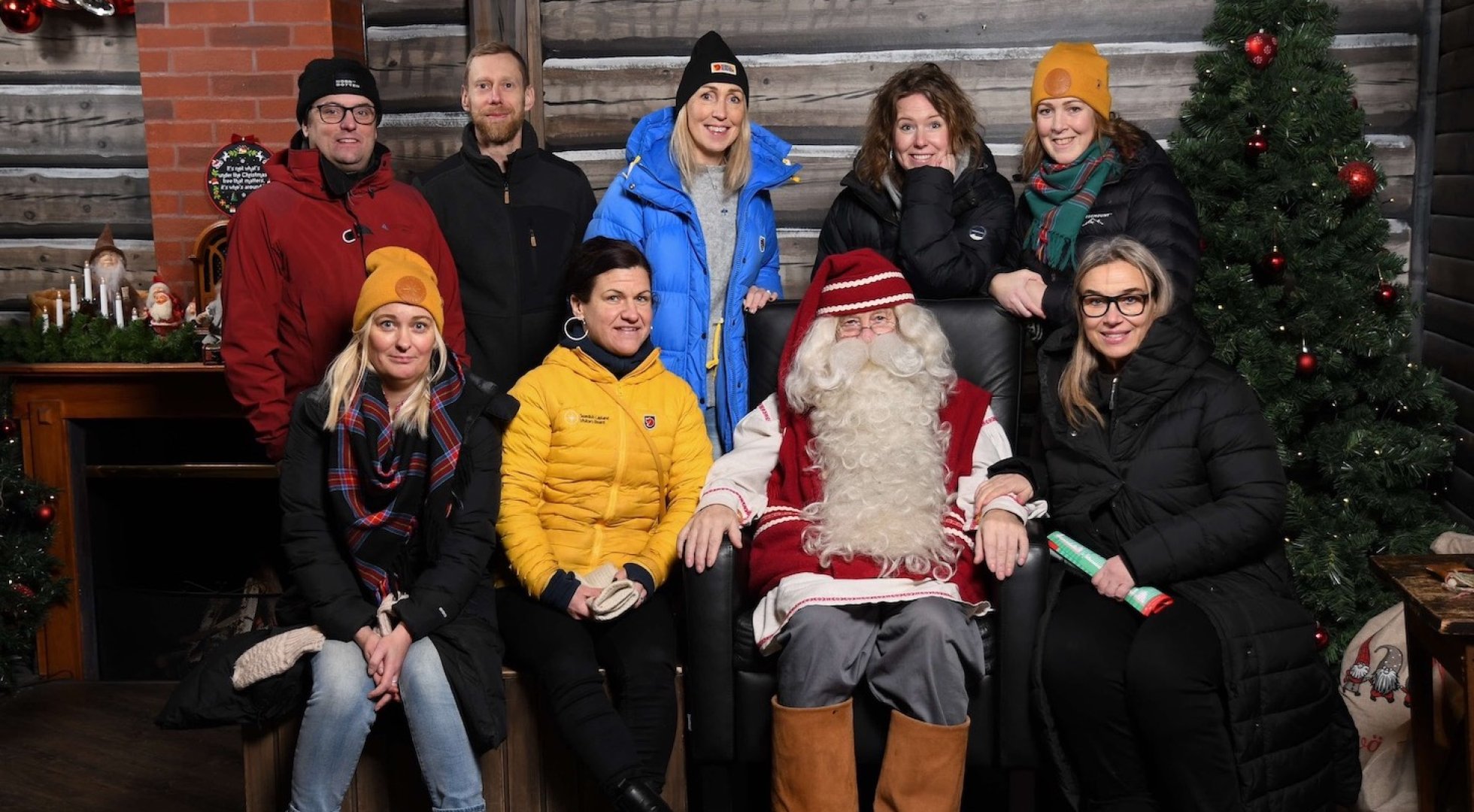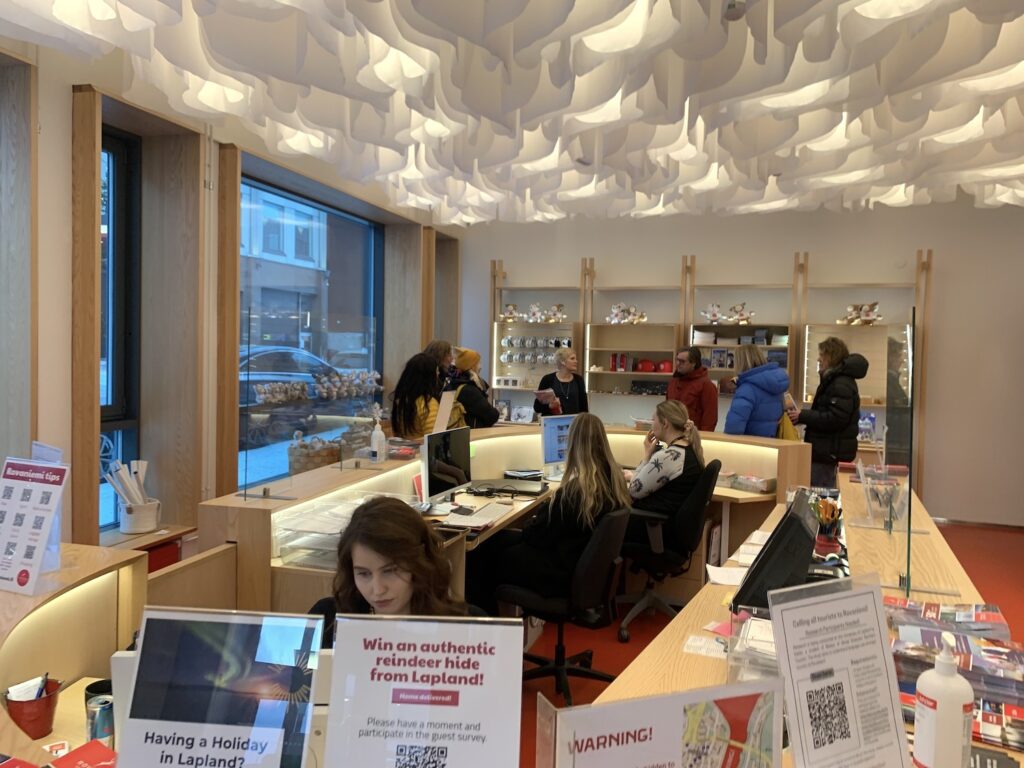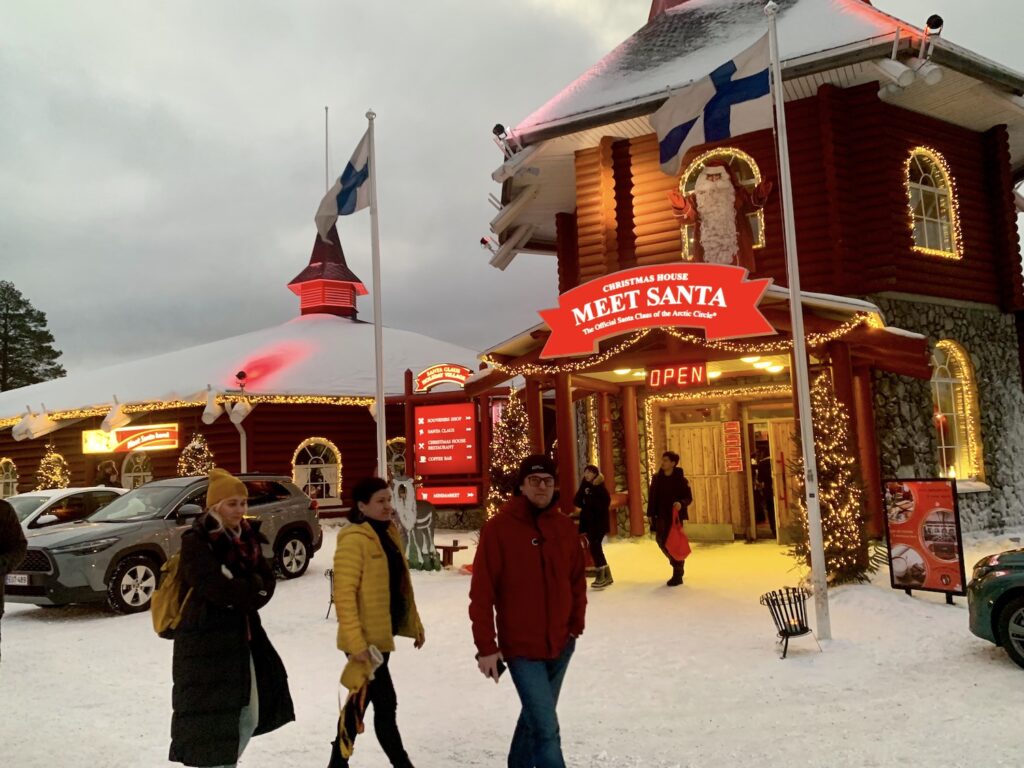
Study trip to Rovaniemi – what can we learn from Finnish Lapland?
In mid-January, parts of the Swedish Lapland Visitors Board went on a study trip to Rovaniemi. An opportunity to learn more about our neighbors in the east and see what similarities and differences exist in the tourism industry in each country. During two intensive days, we got to meet key players in the Finnish tourism industry, make company visits and we got a general insight into how Rovaniemi positions itself on the international market.
Pia Lillberg, Marketing Manager at Visit Rovaniemi gave us a presentation on the municipality’s strategies to attract visitors from all over the world. Rovaniemi has 65,000 inhabitants, in a year the number of people doubles several times over when visitors come here from all over the world.

Most people arrive on one of the 40 direct flights to the local airport. Santa Claus plays the main role in both marketing and valuation. In order to join the Visit Rovaniemi organization, companies must sign a declaration of belief in Santa Claus and his values. Pia Lillberg explains that the success factor of the destination is the many local businesses that really care about the place.
So, who are the entrepreneurs? We met Miko Gröhnberg, the General Manager of two hotels in the city. There are no problems occupying the hotels, especially not during the high season. The challenge is to get guests to stay longer, most stay a maximum of two nights and then travel on to other accommodation facilities in or around Rovaniemi.

Santa Claus Village has become the heart of Rovaniemi. During the high season (around Christmas), there can be up to two and a half hours of queuing to see Santa. Even then, he has two different offices in the Santa Claus Village and one in the city center. We met Juhani Ikonen, the Hotel Manager of Santa Claus Holiday Village, one of about 50 businesses in the village.
Here, accommodation facilities, activity providers, restaurants and souvenir shops all come together in the same area – all with the same USP: Santa Claus lives here. There is a strong focus on extending the season, already seeing that the ‘Christmas season’ is getting longer and snow is not a necessity to attract international visitors.
“What is interesting to take home is how the businesses in Rovaniemi work strategically with season extension. They adjust both opening hours and activities according to the season and snow availability, and by working together they ensure that there is always something open for visitors. When one business is closed during the low season, another one stays open”, says Niklas Wede, business developer at Swedish Lapland Visitors Board.
Just outside Rovaniemi is SnowHotel. You might think they’ve looked to a certain ice hotel in Jukkasjärvi for inspiration, but here the focus is on snow, rather than ice. In addition to a snow hotel that is built every year, there are 40 glass igloos with a front row seat to the Northern Lights show on evenings when the sky invites.

Heidi and Ville Haavikko are the founders of SnowHotel and Ville is the engineer behind both the glacierloos, snow hotels and the snow saunas that are built every winter. A snow sauna can withstand 60 sittings before it risks collapsing, so to give all guests the chance to try this unique sauna, 20 are built each season. According to our guide, SnowHotel is the only place in the world where you can warm up in a sauna made of snow.
The cultural visitor can buy a Culture Pass. One ticket gives entrance to three different museums: Arktikum Science Center and Museum, Korundi House of Culture, and Science Center Pilke. At Arktikum we took part in a solid exhibition about the Arctic.
“It was a fantastic exhibition that is relevant to the entire Arctic. A nice mix of playfulness and seriousness made it suitable for both children and adults”, says Anna Lindblom, Design Manager, Swedish Lapland Visitors Board.
In conclusion, the trip provided a valuable competitive analysis with insights into how Rovaniemi is working to further develop the tourism industry. The city has developed a clear profile where the theme of plots is combined with cultural mediation through institutions such as Arktikum.
Three key observations from the visit can contribute to our continued work with the tourism industry in Norrbotten:
First of all, Rovaniemi is an example of how a destination can bring together different actors around a common vision. Hotels, activity companies and other businesses work on the basis of a shared narrative that permeates the entire destination. Secondly, the city illustrates a way to balance international tourism with local engagement, something that Visit Rovaniemi highlighted in its presentation. Finally, the city’s approach to managing seasonality through strategic collaboration between businesses provides perspectives on opportunities for year-round tourism in Norrbotten/Swedish Lapland.
With these insights in mind, we will continue to develop the tourism industry in Norrbotten, where we can benefit from exchanges of experience with our neighbors while building on the story of our place.





 Svenska
Svenska  English
English 

